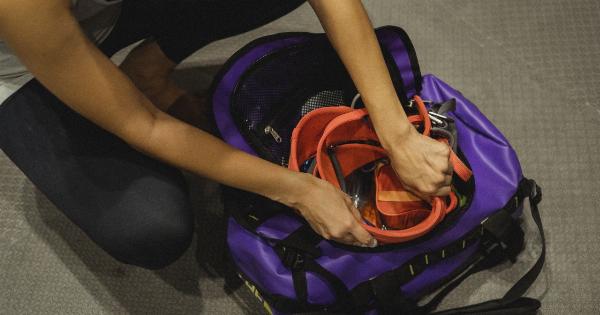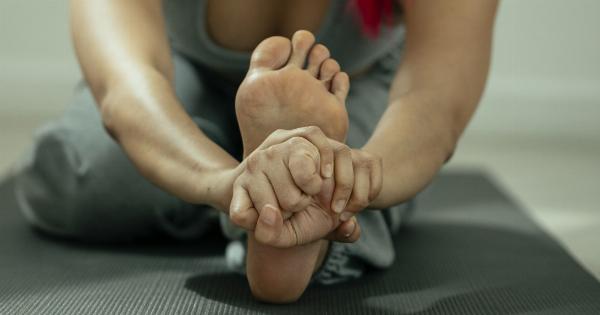The summer months bring warm weather and longer days, making it an ideal time for outdoor activities and exercise.
While staying active is important for maintaining good health, it is crucial to be aware of the potential dangers of exercising in hot weather. High temperatures and increased humidity can put a significant strain on the body, leading to various heat-related illnesses and even fatalities if not properly managed.
In this article, we will explore the reasons why hot weather exercise can be dangerous and discuss ways to mitigate these risks.
The Risks of Exercising in Hot Weather
Exercising in hot weather poses several risks to the body. When we engage in physical activity, our muscles generate heat, and our bodies dissipate this heat through mechanisms such as sweating and increased blood circulation.
However, when outside temperatures are high and humidity levels are soaring, these natural cooling mechanisms become less effective, causing our body temperature to rise rapidly. This can lead to a range of heat-related conditions, including:.
1. Heat Cramps
Heat cramps are painful muscle contractions that usually occur during or after intense exercise in hot weather. They are a result of electrolyte imbalance and dehydration.
The excessive loss of essential minerals, such as sodium, potassium, and calcium, through sweating can trigger these cramps. Commonly affected muscles include those in the legs, arms, and abdomen.
2. Heat Exhaustion
Heat exhaustion is a more severe condition characterized by heavy sweating, rapid pulse, dizziness, nausea, headache, and a feeling of weakness or fatigue.
It occurs when the body’s core temperature rises above normal levels and its cooling mechanisms become overwhelmed. If left untreated, heat exhaustion can progress to heatstroke, a life-threatening condition.
3. Heatstroke
Heatstroke is the most severe heat-related illness and occurs when the body’s core temperature rises above 104°F (40°C). It is a medical emergency that requires immediate attention.
Heatstroke can cause organ damage, seizures, loss of consciousness, and even death. Symptoms include confusion, hot and dry skin, a strong and rapid pulse, and high body temperature.
4. Dehydration
Exercising in hot weather leads to increased sweating as the body tries to cool down. This can result in significant fluid loss, leading to dehydration. Dehydration can cause fatigue, muscle cramps, dizziness, decreased urine output, and dry mouth.
Severe dehydration can be dangerous and may require medical intervention.
5. Sunburn and Skin Damage
Spending extended periods outdoors without proper sun protection can lead to sunburn and skin damage. Prolonged exposure to the sun’s ultraviolet (UV) rays can increase the risk of skin cancer and premature aging.
It is important to wear sunscreen, protective clothing, and seek shade during peak sun hours to minimize the risk of sunburn and other skin-related issues.
6. Worsening of Pre-existing Conditions
Exercising in hot weather can worsen pre-existing medical conditions, such as asthma, allergies, and cardiovascular diseases.
The combination of heat, humidity, and physical exertion can put additional strain on the body, potentially leading to complications or exacerbation of these conditions. It is crucial for individuals with such conditions to consult their healthcare provider and take necessary precautions before engaging in hot weather exercise.
Tips to Stay Safe During Hot Weather Exercise
While exercise is vital for overall health and well-being, it is essential to take necessary precautions when engaging in physical activity during hot weather. Here are some tips to stay safe:.
1. Stay Hydrated
Drink plenty of fluids before, during, and after exercise to prevent dehydration. Opt for water and sports drinks that replenish electrolytes lost through sweating.
Avoid excessive consumption of caffeinated or alcoholic beverages as they can further contribute to fluid loss.
2. Time Your Workouts
Avoid exercising during the hottest parts of the day, typically between 10 a.m. and 4 p.m. Instead, schedule your workouts for early morning or late evening when temperatures are generally cooler.
3. Dress Appropriately
Wear loose-fitting, lightweight, and breathable clothing that allows sweat to evaporate. Choose light-colored attire that reflects sunlight rather than absorbing heat.
Don’t forget to wear a wide-brimmed hat and sunglasses to protect your face and eyes from the sun’s rays.
4. Protect Your Skin
Apply sunscreen with a minimum of SPF 30 to all exposed skin, regardless of your complexion. Reapply every two hours or after excessive sweating or swimming.
Additionally, seek shade whenever possible and consider using a UV-protective umbrella or tent if engaging in extended outdoor activities.
5. Acclimate to the Heat
If you’re not accustomed to exercising in hot weather, gradually increase the duration and intensity of your workouts to allow your body to acclimate. Start with shorter sessions and slowly build up over time.
6. Listen to Your Body
Pay attention to your body’s signals and take breaks when needed. If you experience symptoms such as dizziness, nausea, fatigue, or a rapid heartbeat, stop exercising and seek shade to cool down.
It’s important to know your limits and prioritize your health and safety.
7. Seek Shelter and Air Conditioning
If the heat becomes too unbearable or if you start feeling unwell, seek shelter in an air-conditioned environment. This can help lower your body temperature and reduce the risk of heat-related illnesses.
8. Exercise Indoors
On extremely hot days, consider exercising indoors with the help of workout videos, fitness apps, or gym equipment. This allows you to maintain your exercise routine without the risk of overheating or overexposure to the sun.
9. Buddy Up
Exercising with a friend or joining a group can provide additional safety and support. Look out for each other and ensure everyone is managing the heat well. You can also motivate and encourage each other to stay hydrated and take breaks when needed.
10. Consult a Healthcare Provider
If you have pre-existing medical conditions or are unsure about your ability to tolerate hot weather exercise, consult your healthcare provider. They can provide personalized advice and guidelines to ensure your safety and well-being.
Conclusion
Exercising in hot weather can be a great way to enjoy the outdoors and stay active. However, it is essential to be aware of the potential dangers it poses and take necessary precautions.
By staying hydrated, acclimating to the heat, and listening to your body, you can reduce the risk of heat-related illnesses and ensure a safe and enjoyable exercise experience. Remember, your health and safety should always be a priority, especially when challenging the elements.





























